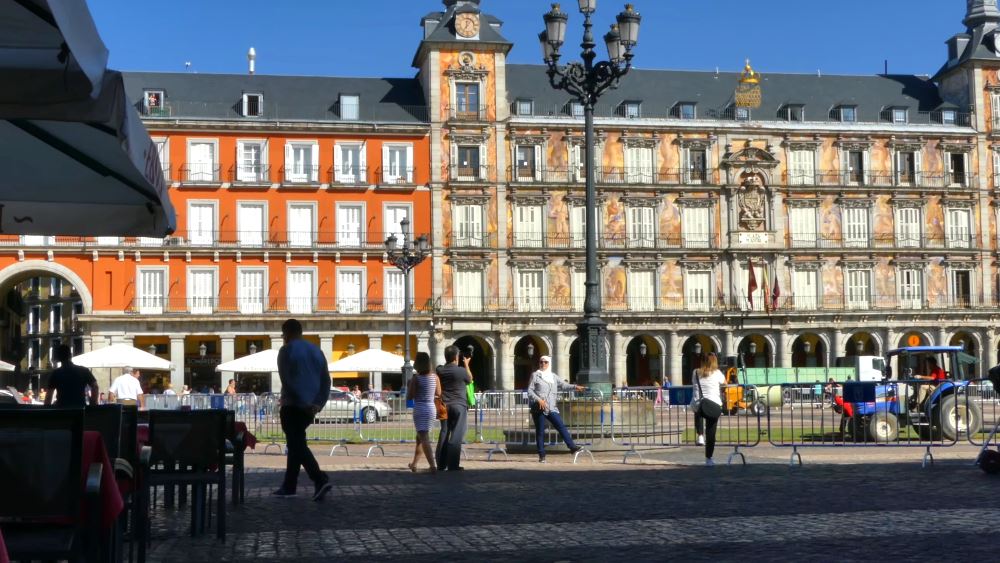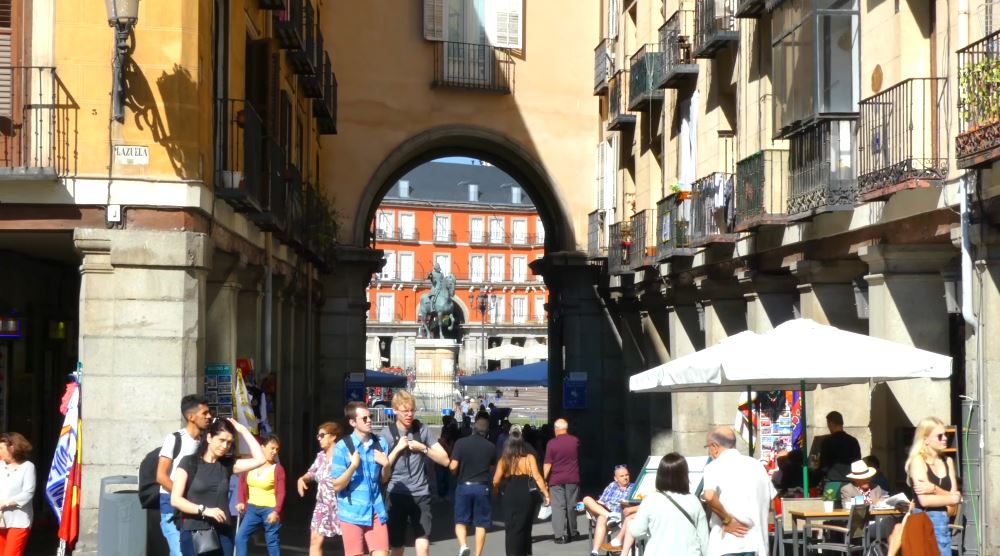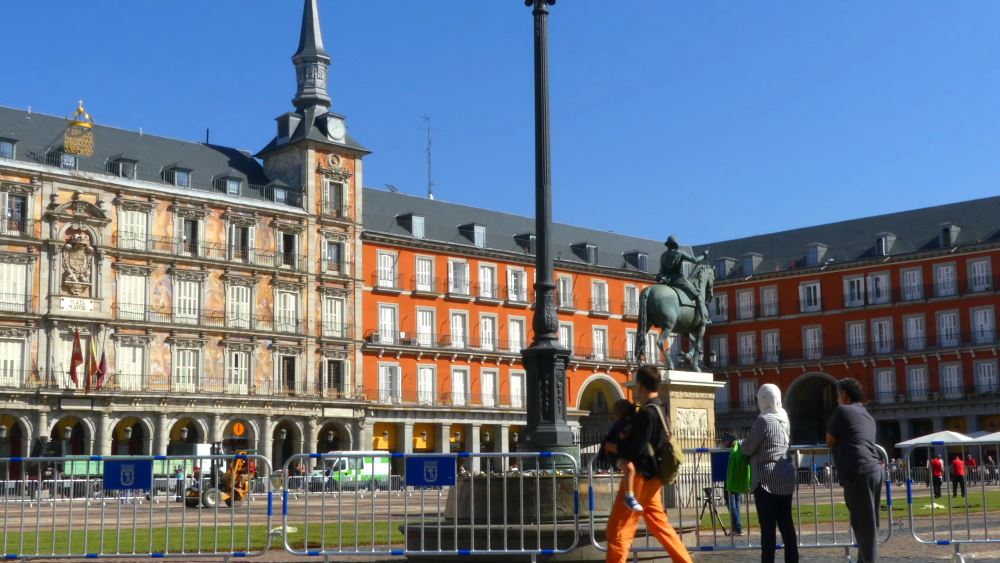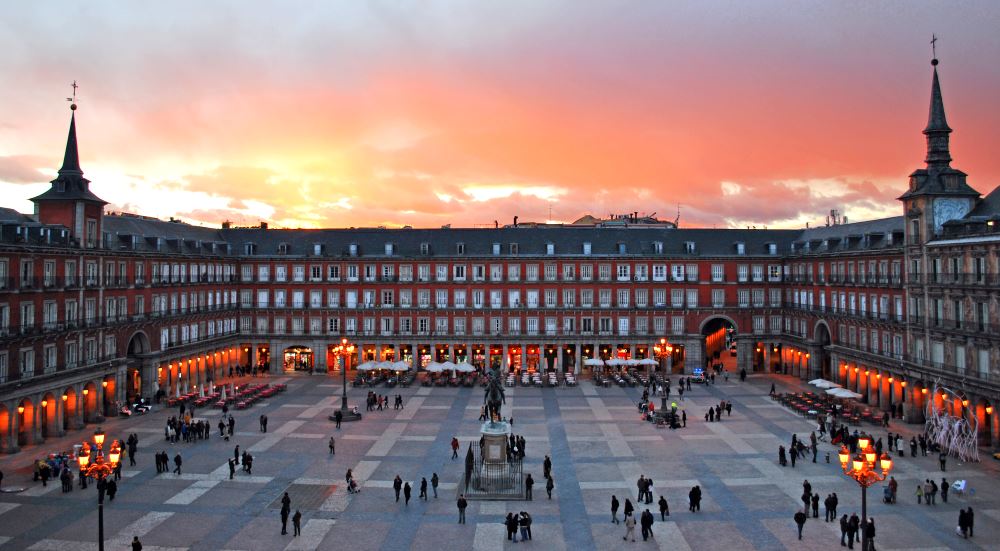Madrid’s main square, Plaza Mayor, is considered one of the oldest in the city. During its existence, it has changed its name several times, but has retained its important social significance.
History of Plaza Mayor
It did not immediately acquire central status. In the beginning, the square was located outside the city and served as a place of trade. In the 14th century it was called Arrabal and was located at a crossroads quite far from the city limits. Peasants and artisans from the surrounding settlements gathered there for fairs. As the city blocks expanded, the square got closer and closer until it was almost in the center of the city. The roads turned into the streets of Madrid. It was decided to ennoble the area and give it an appropriate appearance.
The Plaza Mayor in Madrid under King Philip III was transformed into a venue for important public events. It took on an urbanist appearance thanks to a pioneering project by Juan Gómez de Mora. It took two years to rebuild. It was opened in 1620.

The houses around were built of wood, and the fires that often broke out caused serious damage. They were rebuilt several times because the balconies of the House of Bread served as a royal box and the upper floors were intended for recreation between spectacles.
On the square were held:
- folk festivals;
- bullfighting;
- fairs;
- executions.
It went on like this until the 17th century. After the great fire, when most of the buildings in the eastern part were almost completely burned down, a long restoration began. It lasted sixty years. In the process, wooden structures were replaced by stone ones. It was based on a design by the architect Juan de Villanueva. Since then, the square has taken on an almost modern appearance. Stately buildings rose up along the perimeter. Access to the interior was through nine gates. In 1874 an equestrian sculpture of Philip III was installed.
Madrid’s main square these days
The main historical landmarks were the houses of the rival shops, the butchery and the bakery. The butcher shop and bakery are now museums, with souvenir shops in the arches. Traditionally, the square continues to be a place of public events, festivals and celebrations. Life on it does not stop, music can be heard, the artists offer to look at their paintings and order a portrait.

In Plaza de Mayor in Madrid you can have a delicious lunch in a small restaurant or cozy cafe, watch a play on the open stage or stroll through the small stores in search of rarities and nice souvenirs.
It is a pity that you can no longer see bullfighting on it, the last one took place in 1846. Plaza Mayor in Madrid was once one of the first places to hold these events.
The first bullfight was dedicated to the Prince of Wales and was held in 1623.
Sites of interest in Plaza Mayor
After several fires, which consecutively destroyed most of the buildings, they were replaced by stone ones, joined by edges and cut through arches in them. The Casa de Panadería, a bakery that supplied baked goods to the royal court, remains as a reminder of the past. From its balconies the noble lords watched the events on the square, and balls and receptions were held in its luxurious halls. The building has been preserved. After the restoration, the academies of History and Fine Arts were housed there at various times, and later the city’s archive and the exhibition of ancient frescoes were moved there.

The statue of Philip III waited 26 long years to be moved to its rightful place. The decree was issued by Queen Isabella, but due to tumultuous political events it was forgotten and only during the reign of Alfonso was the equestrian sculpture moved and installed in its place.

You can combine a tour of the square with a visit to the sights of the city, which are very close:
- Puerta del Sol, where kilometer zero is located;
- The Royal Palace, which is the residence of the monarch and the site of official events;
- Prado Museum, whose collections include 8,600 paintings by painters of various schools and eras;
- Gateway to Europe, a unique complex of two inclined skyscrapers.
How to get to Plaza Mayor
The square is one of the main attractions. It is listed on the tourist maps, there is also information that it is best reached by subway, bus routes 3, 17, 50. Puerto del Sol can serve as a reference point.
A cab ride will be beneficial for a family or small company. Cab drivers know very well where the central square of Madrid is located and will bring you to the right address without further explanation on the part of tourists.
Plaza Mayor on the map of Madrid
Interesting facts about Plaza Mayor

- It changed its name several times.
- A monument to Philip III was going to be erected for 26 years.
- Many cities in the country have squares that mimic the central square of Madrid.
- The vaults and arches have become a trademark of the city, depicted on many postcards and tourist brochures.
- At the end of November, the Christmas Bazaar opens on the square.
Tourists who come to Madrid, try to visit and walk around the Plaza de Mayor, feeling the inexplicable charm of this historic place.
